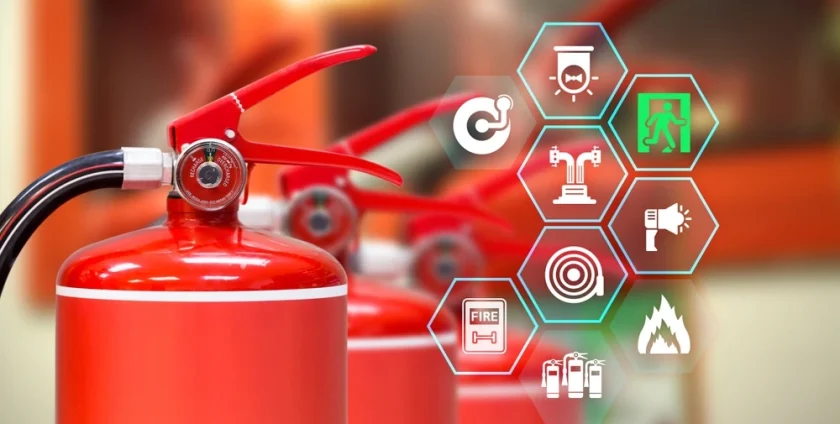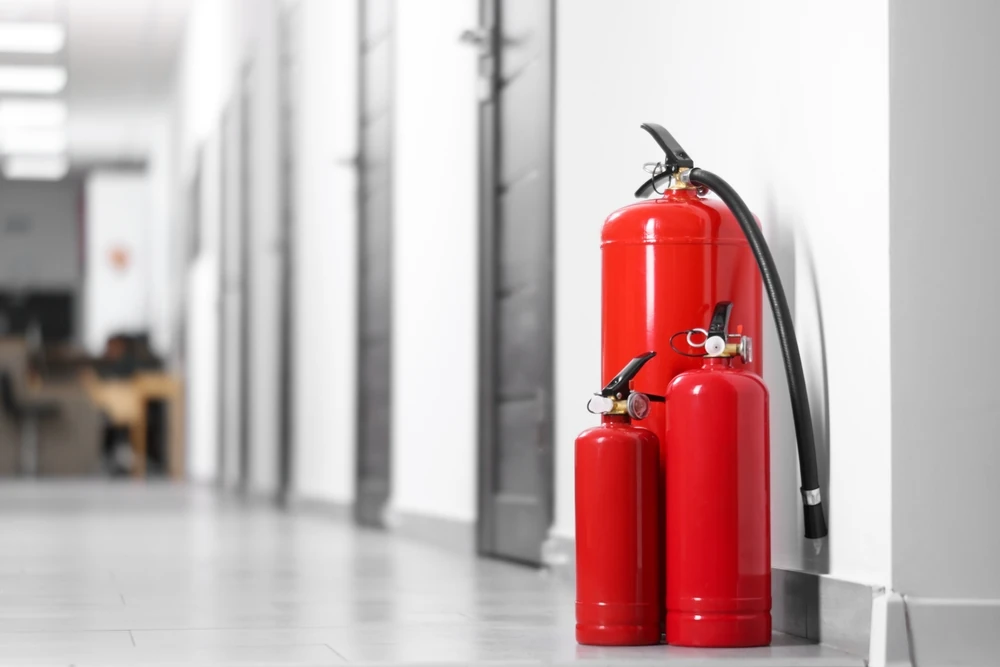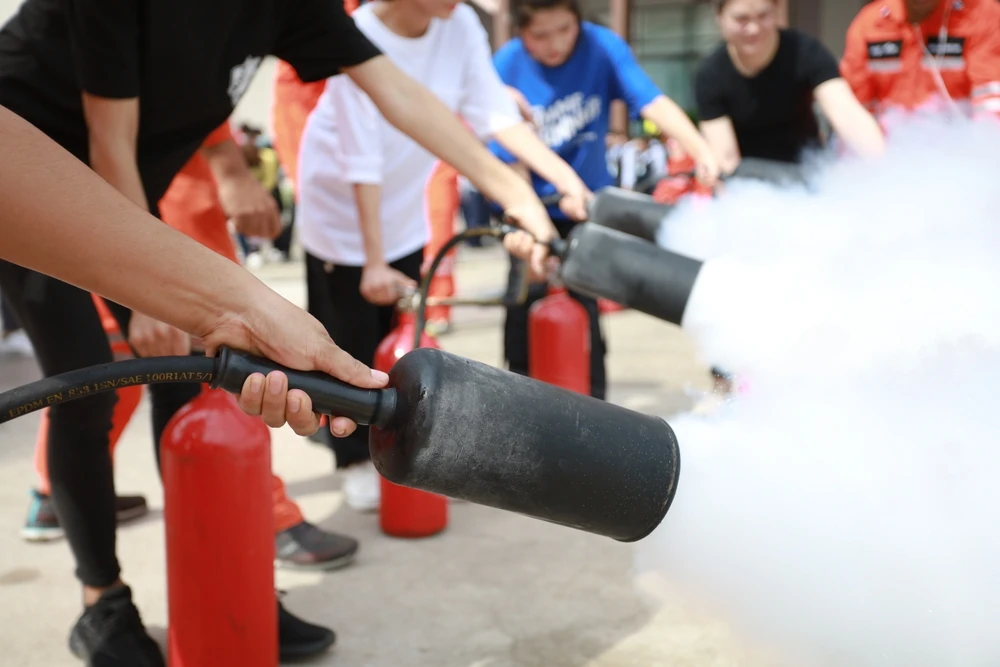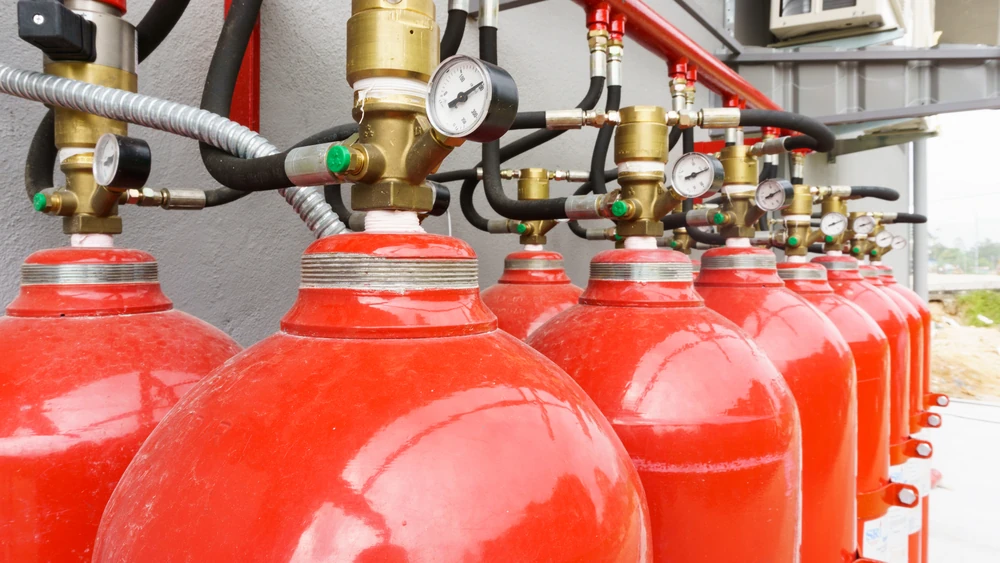
A fire extinguisher is a portable safety device designed to suppress or extinguish small fires in emergency situations. It consists of a hand-held cylindrical pressure vessel filled with an extinguishing agent that is discharged to control or eliminate a fire. Fire extinguishers are essential fire safety tools used in homes, offices, factories, and public buildings to prevent fires from spreading uncontrollably.
Types of Fire Extinguishers
Understanding the different types of fire extinguishers is crucial for selecting the right one for various fire hazards. Fire extinguishers are classified based on the extinguishing agent they contain:

1. Water Fire Extinguisher
- Used for Class A fires (wood, paper, textiles).
- Works by cooling the fire and reducing the heat source.
- Color Code: Red
2. Foam Fire Extinguisher
- Suitable for Class A and Class B fires (flammable liquids like petrol, paint).
- Forms a blanket over the fire, cutting off oxygen.
- Color Code: Cream
3. Dry Powder Fire Extinguisher
- Effective against Class A, B, and C fires (solids, flammable liquids, gases).
- Interrupts the chemical reaction of the fire.
- Color Code: Blue
4. Carbon Dioxide (CO2) Fire Extinguisher
- Ideal for electrical and Class B fires.
- Extinguishes fire by displacing oxygen.
- Leaves no residue, making it suitable for offices and server rooms.
- Color Code: Black
5. Wet Chemical Fire Extinguisher
- Designed for Class F fires (cooking oil, fats).
- Works by cooling and forming a soap-like barrier over the fire.
- Color Code: Yellow
Fire Extinguisher Classes
Fire extinguishers are classified based on the type of fire they can extinguish:
- Class A – Fires involving solid combustibles like wood, paper, and textiles.
- Class B – Fires caused by flammable liquids such as petrol and oil.
- Class C – Fires involving gases like methane and butane.
- Class D – Fires caused by combustible metals such as magnesium and aluminum.
- Class F – Fires resulting from cooking oils and fats.
- Electrical Fires – Fires involving electrical equipment, usually handled by CO2 or dry powder extinguishers.
How Does a Fire Extinguisher Work?
Fire extinguishers work by removing one or more elements of the fire triangle: heat, oxygen, and fuel. Different extinguishers use varying techniques:

- Cooling (water-based extinguishers reduce heat).
- Smothering (foam and CO2 extinguishers cut off oxygen).
- Chemical Reaction Disruption (dry powder extinguishers stop the combustion process).
Fire Extinguisher Uses
- Extinguishing small fires before they spread.
- Providing immediate response to fire outbreaks.
- Protecting lives and property.
- Controlling fire until professional help arrives.
Best Fire Extinguisher for Home
For home safety, a multi-purpose dry powder fire extinguisher (ABC type) is recommended. It can handle most household fire hazards, including electrical fires, flammable liquids, and solid combustibles. Water mist extinguishers are also effective for general home use.
Fire Extinguisher Safety Tips
- Keep fire extinguishers in accessible locations.
- Train family members and employees on their proper use.
- Conduct routine fire drills.
- Never use water extinguishers on electrical or oil fires.
- Stand at a safe distance while using an extinguisher.
Fire Extinguisher Maintenance
Regular maintenance ensures that a fire extinguisher functions properly when needed. Key maintenance steps include:
- Monthly inspections to check for damage or pressure loss.
- Annual servicing by a professional.
- Replacing expired or damaged extinguishers.
- Ensuring proper placement and accessibility.
Fire Extinguisher Refill Cost
In Bangladesh, the fire extinguisher refill cost varies depending on type and size. The average refill cost ranges from BDT 90 to BDT 110 per cylinder, excluding transport charges.

Fire Extinguisher Price in Bangladesh
Fire extinguisher prices in Bangladesh vary based on size, type, and brand. Approximate costs are as follows:
- 3 kg ABC Extinguisher – BDT 1,550
- 5 kg ABC Extinguisher – BDT 1,950 – BDT 2,200
- 3 kg CO2 Extinguisher – BDT 2,800 – BDT 3,000
- 5 kg CO2 Extinguisher – BDT 3,450 – BDT 3,800
Having a fire extinguisher at home or workplace is a crucial safety measure. Proper knowledge, regular maintenance, and selecting the right extinguisher can significantly enhance fire safety and protection.
- By:Z3 Corporation
- 0 comment

Leave a Reply